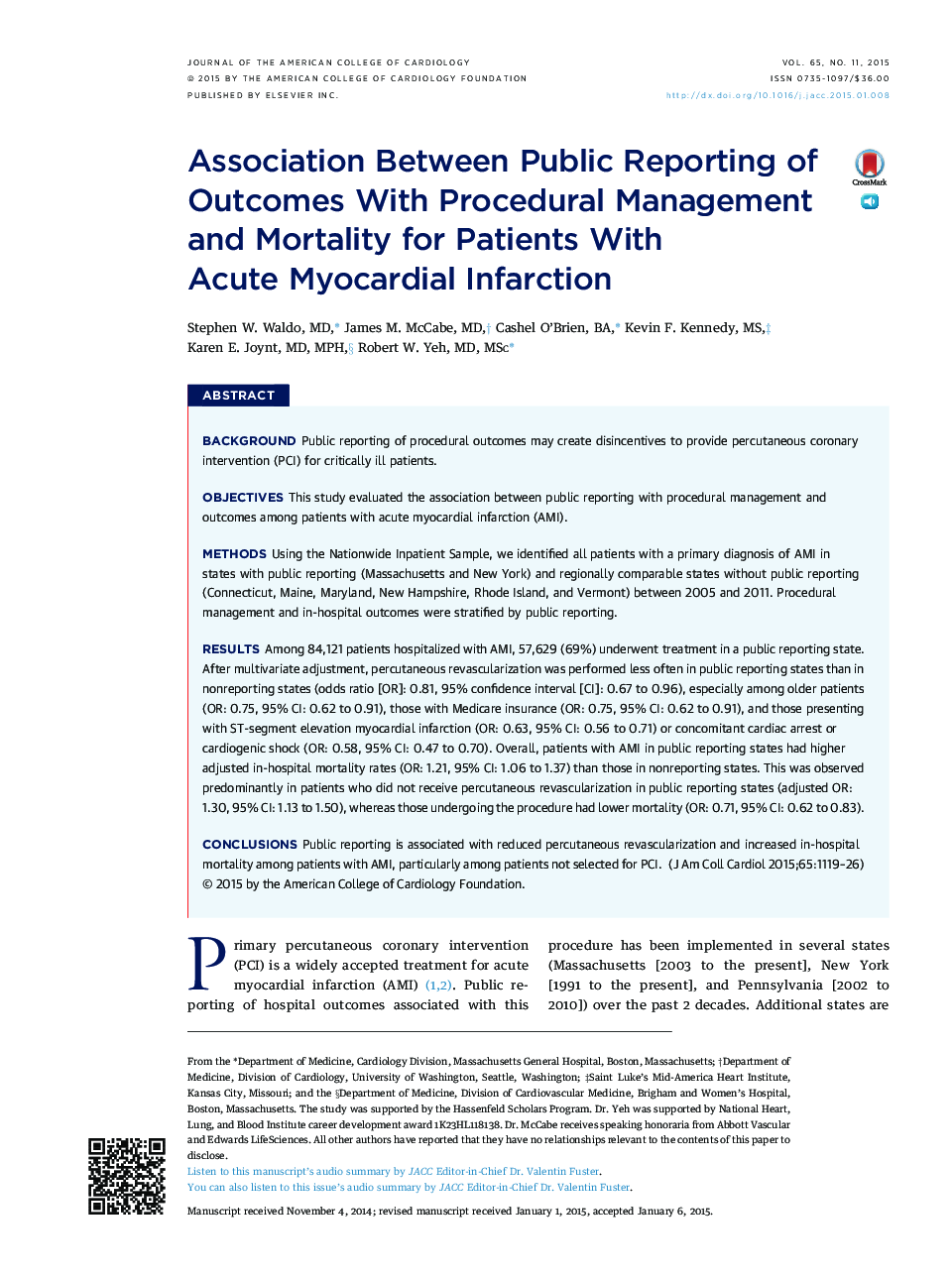| Article ID | Journal | Published Year | Pages | File Type |
|---|---|---|---|---|
| 2944313 | Journal of the American College of Cardiology | 2015 | 8 Pages |
BackgroundPublic reporting of procedural outcomes may create disincentives to provide percutaneous coronary intervention (PCI) for critically ill patients.ObjectivesThis study evaluated the association between public reporting with procedural management and outcomes among patients with acute myocardial infarction (AMI).MethodsUsing the Nationwide Inpatient Sample, we identified all patients with a primary diagnosis of AMI in states with public reporting (Massachusetts and New York) and regionally comparable states without public reporting (Connecticut, Maine, Maryland, New Hampshire, Rhode Island, and Vermont) between 2005 and 2011. Procedural management and in-hospital outcomes were stratified by public reporting.ResultsAmong 84,121 patients hospitalized with AMI, 57,629 (69%) underwent treatment in a public reporting state. After multivariate adjustment, percutaneous revascularization was performed less often in public reporting states than in nonreporting states (odds ratio [OR]: 0.81, 95% confidence interval [CI]: 0.67 to 0.96), especially among older patients (OR: 0.75, 95% CI: 0.62 to 0.91), those with Medicare insurance (OR: 0.75, 95% CI: 0.62 to 0.91), and those presenting with ST-segment elevation myocardial infarction (OR: 0.63, 95% CI: 0.56 to 0.71) or concomitant cardiac arrest or cardiogenic shock (OR: 0.58, 95% CI: 0.47 to 0.70). Overall, patients with AMI in public reporting states had higher adjusted in-hospital mortality rates (OR: 1.21, 95% CI: 1.06 to 1.37) than those in nonreporting states. This was observed predominantly in patients who did not receive percutaneous revascularization in public reporting states (adjusted OR: 1.30, 95% CI: 1.13 to 1.50), whereas those undergoing the procedure had lower mortality (OR: 0.71, 95% CI: 0.62 to 0.83).ConclusionsPublic reporting is associated with reduced percutaneous revascularization and increased in-hospital mortality among patients with AMI, particularly among patients not selected for PCI.
